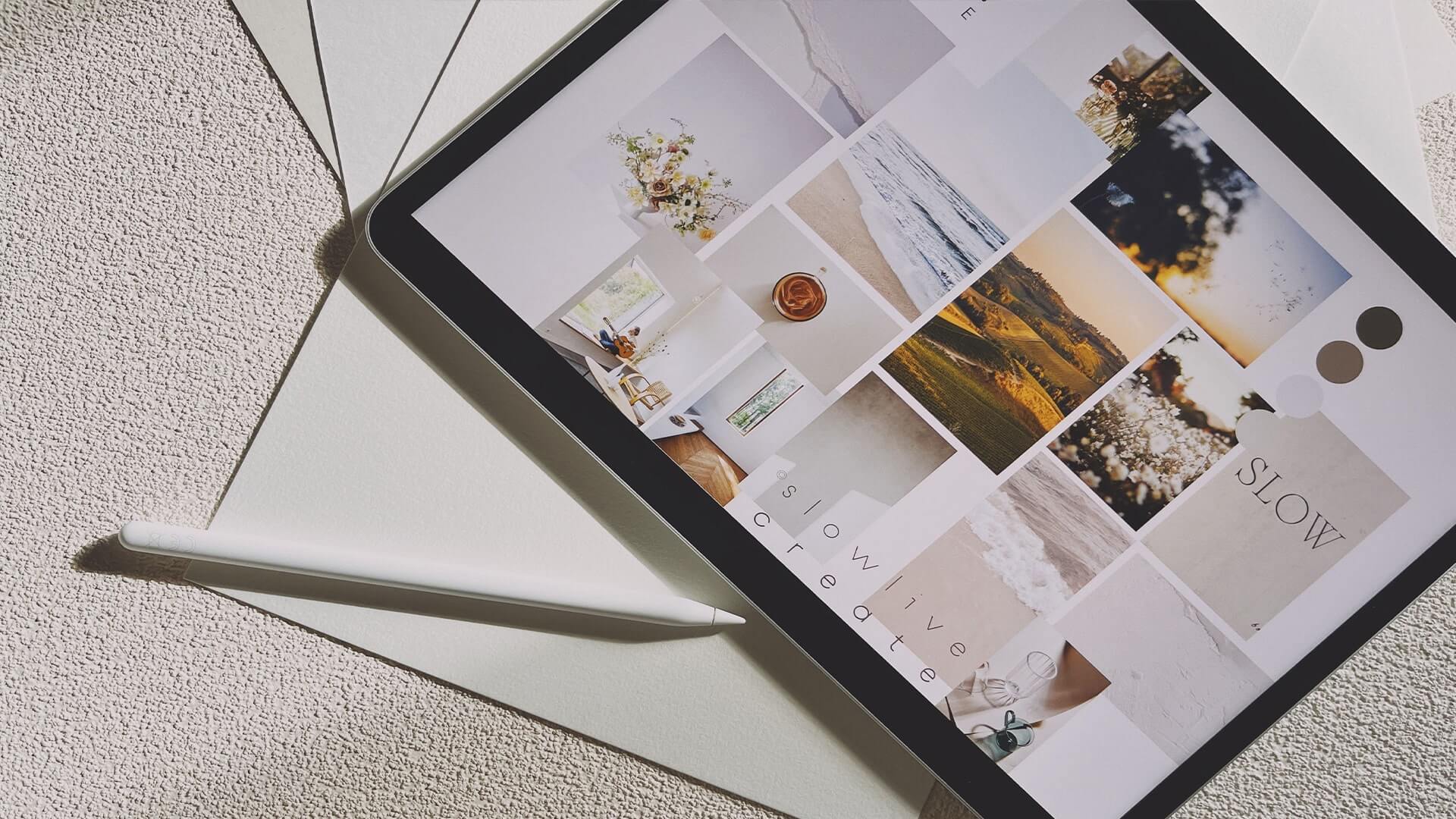Branding and creativity are two core elements of successful marketing. While most people think the creative direction is the fun part of marketing, the reality is that making a final decision on creative elements for clients is hard work. You have to consider brand perception and how to differentiate your client from competitors. Getting everyone aligned around a final decision can also be challenging.
Over the years, we’ve learned a few tips and tricks to navigate the complicated creative process. Mood boards have become one of our favorite tools. Mood boards can be a valuable tool whether you’re looking to refresh your entire marketing plan or find the next angle for your marketing campaign.
What is a mood board and why are they effective?
In short, a mood board is a visual representation of ideas gathered from a variety of sources to help you find the best idea for your creative marketing project.
While most companies utilize mood boards for big branding projects, they can also be helpful when redesigning your website, developing your social media calendar, or for something as simple as designing a company t-shirt.
Here are a few reasons why we love using mood boards with our clients:
1. Find and cultivate inspiration.
The best creative ideas come from collaboration. Because everyone has a unique perspective, certain images, words, or colors might resonate differently with your audience. Mood boards provide a way to capture a variety of ideas that can help you build a creative campaign that reaches different audiences
2. Get everyone on the same page.
Collaboration is an essential part of marketing. Ideas need to be heard and considered by every member. A mood board supports the collaboration process by providing a framework for people to operate within. It provides clarity within the collaboration process that ensures everyone is working in the same direction.
3. Ensure you’re developing a cohesive approach.
It’s important for your marketing to tell a cohesive story. Mood boards help by allowing you to see how various elements work together to develop a narrative.
4. Make it easier to gain buy-in from stakeholders.
Making a final decision can be one of the most challenging aspects of a branding or creative project. Your design team could work for hours only to get an idea nixed by the CEO or final decision-maker. A mood board mitigates that risk by gaining buy-in early on in the process. It also provides a more visually appealing way to present your ideas. Mood boards can help you explain your ideas or direction in ways that words can’t.
How to Create a Mood Board
There’s no one right way to create a mood board. But here are a few helpful steps to maximize your effectiveness:
1. Find a tool that works for your team.
It’s important to find an approach that works best for your team. You can create a physical mood board in your office. There are also a variety of online tools that make it easy to create digital mood boards. These are helpful if you’re working remotely or hiring a freelance designer for your project.
2. Define your goal and audience.
Taking a moment to identify who you’re trying to reach and what you’re trying to achieve can provide clarity for your team. Doing this on the front end can help save a lot of time and ensure everyone is working in the same direction.
3. Identify elements to include in your mood board.
What you include in your mood board will depend on the nature of your project. Most mood boards include images that convey the look and feel you’re hoping to recreate with the final product of that project. But you can also add colors, font families, or certain keywords or phrases that capture what you’re trying to communicate.
4. Invite others to share inspiration.
Once you’ve set some parameters, it’s time to invite others into the collaboration process. Encourage participants to include anything they find that feels like a visual representation of your brand. While this might come more naturally for some than others, don’t discount the feedback and perspective from people you might not consider to be the most creative individuals on your team. Invite everyone to look for marketing inspiration that is all around them.
5. Identify trends.
After everyone has had a chance to add ideas, it’s time to start narrowing your focus. Are there certain visuals or elements that seem to stand out more than others? What elements might work well together and appeal to your audience? Take this time to cut any ideas that might seem out of place.
6. Balance a final decision with continued inspiration.
Once you feel like you’ve narrowed down your mood board to its final stage, ask yourself: Does this provide enough clarity and direction to begin executing our project? If so, you’re ready to get started.
As an aside, some companies curate mood boards to capture ideas on a regular basis. These can be helpful to use as guideposts for driving brand and design decisions in the future.
Feel stuck in your branding efforts or creative marketing project? Our team can help. Connect with Green Apple to learn more about our unique process. We’d love to discuss your needs and develop a strategy based on where you want to go.


